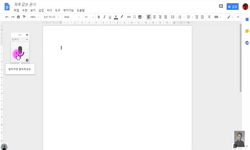The respiratory rate (RR) is an important sign for predicting various critical clinical events. Numerous studies have proposed different methods to estimate RR. However, those researches conducted experiments in a controlled environment. Therefore, th...
http://chineseinput.net/에서 pinyin(병음)방식으로 중국어를 변환할 수 있습니다.
변환된 중국어를 복사하여 사용하시면 됩니다.
- 中文 을 입력하시려면 zhongwen을 입력하시고 space를누르시면됩니다.
- 北京 을 입력하시려면 beijing을 입력하시고 space를 누르시면 됩니다.
Estimation of respiratory rate using a microphone on face masks in various environments : 다양한 환경에서 안면마스크의 마이크를 이용한 호흡수 예측
한글로보기https://www.riss.kr/link?id=T15936542
- 저자
-
발행사항
아산 : Soonchunhyang University Graduate School, 2021
-
학위논문사항
학위논문(석사) -- Soonchunhyang University Graduate School , ICT융합학과 , 2021. 8
-
발행연도
2021
-
작성언어
영어
- 주제어
-
DDC
610.28 판사항(23)
-
발행국(도시)
충청남도
-
형태사항
viii, 38 p.; 26 cm.
-
일반주기명
지도교수: 남윤영.
단면인쇄임.
참고문헌: p. 32-36. -
UCI식별코드
I804:44009-200000505588
- 소장기관
-
0
상세조회 -
0
다운로드
부가정보
다국어 초록 (Multilingual Abstract)
critical clinical events. Numerous studies have proposed different methods to
estimate RR. However, those researches conducted experiments in a controlled
environment. Therefore, this study aims to measure RR by using nasal and
mouth breath sound recordings from a microphone placed inside face masks
during experiments in structured and complex environments. In addition, 3- ix -
types of mask such as surgical, KF94, and reusable masks were used to
conduct experiments in 4 environments including a room, a bus, a street, and
a subway. The participants were instructed to inhale at each beeping sound
and exhale before the next beep occurred at a metronome rate produced by a
smartphone application ranging from 0.2 to 0.4 (Hz) which resembles 12 to 24
(breaths/min). Thus, during the experiment, the participants were required to
wear the proposed masks and earphones to listen to the beeping sounds. By
our observation, the non-parametric periodogram method seems to have better
performance for RR estimation. Therefore, the Welch periodogram method was
used to estimate the power spectral density (PSD) of the breathing signal
envelope and measure a RR by finding the peak of PSD. We collected data
from 10 healthy participants for experiments. The first experiment by only
breath through the nose achieved a median and IQR of accuracy and
repeatability of 0% for all cases. The second experiment by only breath
through the mouth yielded a median and IQR of accuracy and repeatability of
0% for most cases, only IQR of repeatability was increased in the train
environment at 0.2 Hz. Finally, the last experiment which breathed 30s through
the nose and 30s through the mouth obtained 0% in the median of accuracy
and repeatability for every case. However, the IQR of repeatability was
increased in a bus and a train. In short, most experiments achieved a median
and IQR of accuracy and repeatability as low as 0%. Furthermore, the duration
of the signal that was used for RR estimation is only 20 seconds which is a
real-time estimation and has been considered by a majority of previous
studies.
The respiratory rate (RR) is an important sign for predicting various
critical clinical events. Numerous studies have proposed different methods to
estimate RR. However, those researches conducted experiments in a controlled
environment. Therefore, this study aims to measure RR by using nasal and
mouth breath sound recordings from a microphone placed inside face masks
during experiments in structured and complex environments. In addition, 3- ix -
types of mask such as surgical, KF94, and reusable masks were used to
conduct experiments in 4 environments including a room, a bus, a street, and
a subway. The participants were instructed to inhale at each beeping sound
and exhale before the next beep occurred at a metronome rate produced by a
smartphone application ranging from 0.2 to 0.4 (Hz) which resembles 12 to 24
(breaths/min). Thus, during the experiment, the participants were required to
wear the proposed masks and earphones to listen to the beeping sounds. By
our observation, the non-parametric periodogram method seems to have better
performance for RR estimation. Therefore, the Welch periodogram method was
used to estimate the power spectral density (PSD) of the breathing signal
envelope and measure a RR by finding the peak of PSD. We collected data
from 10 healthy participants for experiments. The first experiment by only
breath through the nose achieved a median and IQR of accuracy and
repeatability of 0% for all cases. The second experiment by only breath
through the mouth yielded a median and IQR of accuracy and repeatability of
0% for most cases, only IQR of repeatability was increased in the train
environment at 0.2 Hz. Finally, the last experiment which breathed 30s through
the nose and 30s through the mouth obtained 0% in the median of accuracy
and repeatability for every case. However, the IQR of repeatability was
increased in a bus and a train. In short, most experiments achieved a median
and IQR of accuracy and repeatability as low as 0%. Furthermore, the duration
of the signal that was used for RR estimation is only 20 seconds which is a
real-time estimation and has been considered by a majority of previous
studies.
목차 (Table of Contents)
- CHAPTER 1: INTRODUCTION 10
- CHAPTER 2: RELATED WORK 13
- CHAPTER 3: METHODS 16
- 3.1 PROTOTYPE OF THE MASK 16
- 3.2 DATA ACQUISITION 17
- CHAPTER 1: INTRODUCTION 10
- CHAPTER 2: RELATED WORK 13
- CHAPTER 3: METHODS 16
- 3.1 PROTOTYPE OF THE MASK 16
- 3.2 DATA ACQUISITION 17
- 3.3 DATA PREPROCESSING 19
- 3.3 DATA ANALYSIS 21
- CHAPTER 4: RESULTS 23
- 4.1 FIRST EXPERIMENTS 23
- 4.2 SECOND EXPERIMENTS 28
- 4.3 THIRD EXPERIMENTS 33
- CHAPTER 5: DISCUSSION AND CONCLUSION 39
- REFERENCES 41
- ACKNOWLEDGEMENT 46











